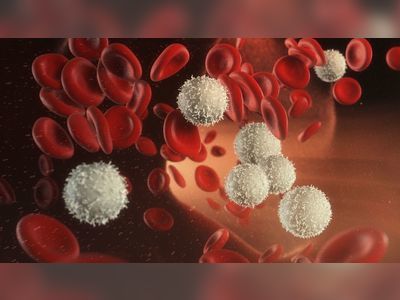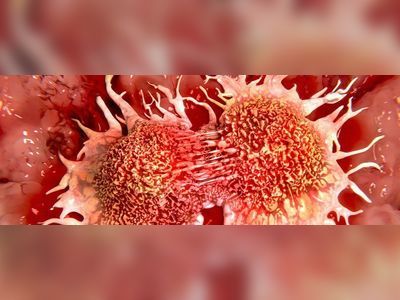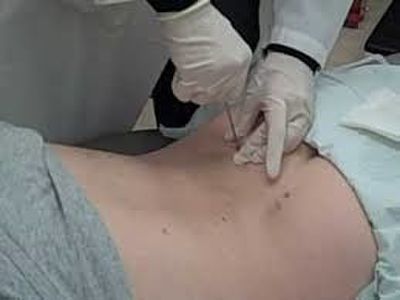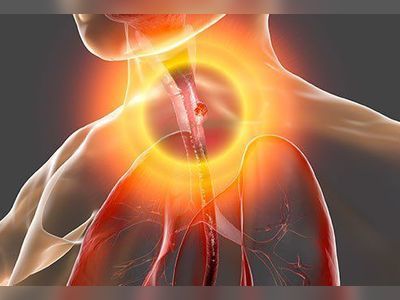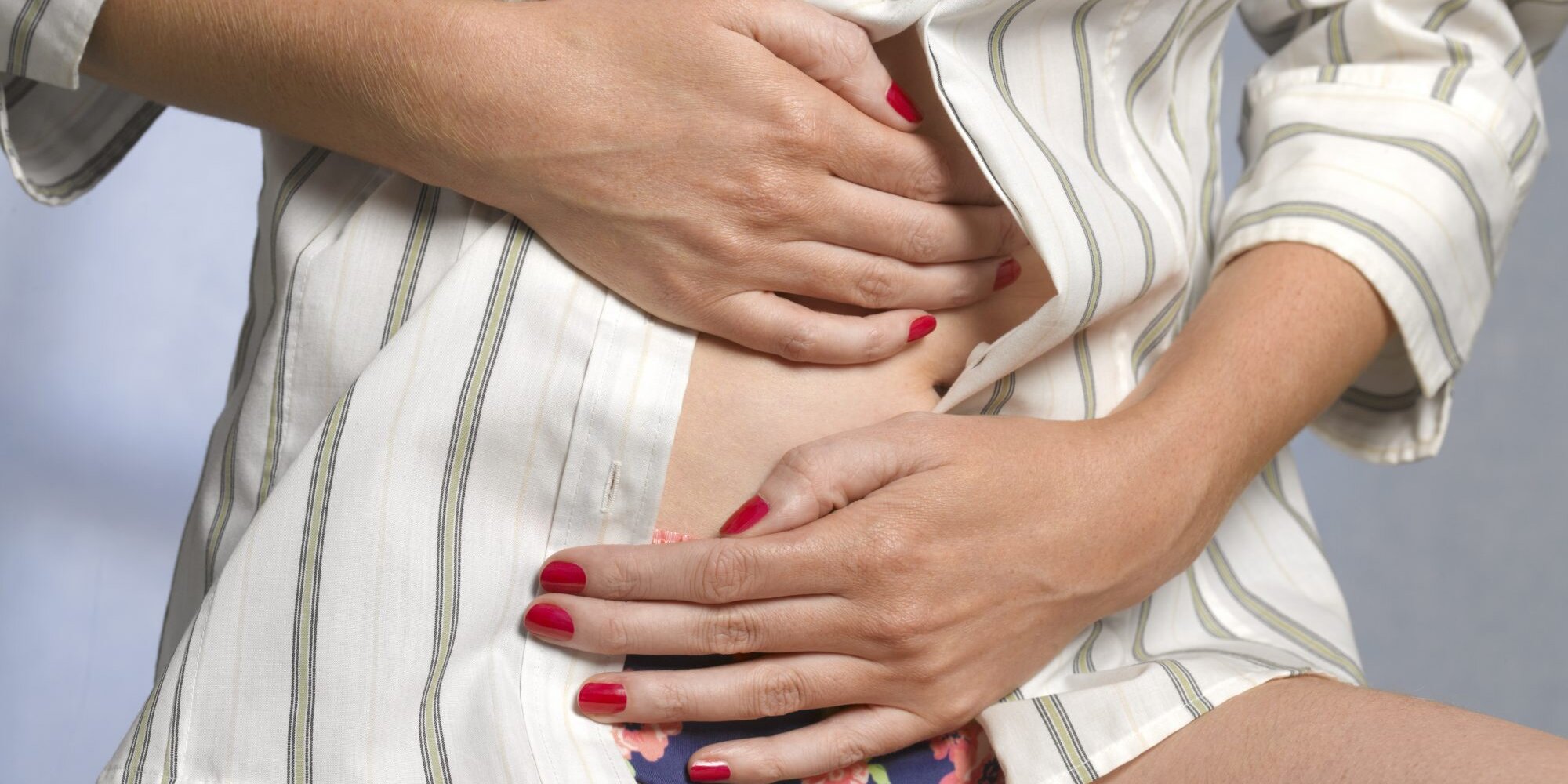
12 Reasons You Might Have Cramps That Have Nothing to Do With Your Period
For some women, menstrual cramps are a bother for a few days every month. For others-like those who suffer from conditions like endometriosis or adenomyosis-the pain can be severe, chronic, and even debilitating.
But cramps and abdominal discomfort aren’t always period-related, and you should consider other causes if you have ongoing pelvic pain. That’s especially true if your cramps don’t get better or worse around the same time every month.
Talking to your gynecologist is a good start, but you may also want an evaluation from your primary care physician, a gastroenterologist, a urologist, or a pelvic medicine specialist as well, says Benjamin Brucker, MD, assistant professor of urology and ob-gyn at NYU Langone Health.
“There are several different categories of health problems, such as pelvic-floor issues or bladder issues, that could contribute to a similar type of pain,” says Dr. Brucker. If you suspect your persistent symptoms aren’t related to your monthly cycle, here are some other potential culprits.
Kidney stones
Kidney stones-hard masses formed in the kidneys from calcium-often cause back or side pain just below the ribs. But if a stone works its way down the urinary tract, it can cause pain in the lower abdomen or even the vagina. An ultrasound or CT scan can help diagnose this common condition, and blood and urine tests may also be required to rule out other problems.
Small kidney stones can usually be passed on their own with the help of over-the-counter pain relievers and plenty of fluids. Doctors may also prescribe medications known as alpha blockers, which help relax the muscles in the urinary tract. Large stones may need to be broken apart with sound-wave technology or removed surgically.
Painful-bladder syndrome
Technically known as interstitial cystitis, this condition is what doctors call pain in the bladder with no obvious or identifiable cause. “Bladder muscles can contract and spasm the same way the muscles of the uterus can, and they can cause a similar cramping sensation,” says Dr. Brucker. “Sometimes the pain gets worse with bladder filling and better with bladder emptying, but that’s not the case for everyone."
There's no diagnostic test for painful-bladder syndrome, and treatment varies depending on a woman’s specific symptoms. One potential therapy include electrical stimulation of the pelvic nerves, a treatment also used for overactive bladder.
A fibroid, cyst, or tumor
If you're experiencing unexplained pelvic pain, doctors will often perform imaging tests to look for structural causes-like uterine fibroids, a cyst on the ovaries, or, rarely, a tumor in the reproductive organs. (Ovarian cysts are usually benign, but they can occasionally become cancerous.)
Doctors may also recommend a colonoscopy to make sure you have no polyps-unusual growths that can sometimes progress to cancer-in your bowel tract. Colon polyps and early colon cancer are often symptomless, but doctors still say that belly pain or discomfort that lasts longer than a week should be checked.
Ovarian torsion
Last year, actress Busy Philipps went to the emergency room after suffering “crazy, excruciating pain” in her lower right side, she posted on social media. Turns out, she had ovarian torsion-when an ovary or a fallopian tube twists around itself, which can cut off blood flow and affect fertility.
The condition accounts for only about 3% of all gynecological conditions, and it’s not caused by anything a woman does, like jumping or twisting her body. (One thing that can raise your risk, however, is having an existing ovarian cyst.) Experts say that anyone with sudden and severe abdominal pain-especially if it’s also associated with vomiting-should get to the emergency room right away and be checked out for this.
Infection
Some women can immediately recognize the symptoms of a urinary tract infection-like a constant need to pee, and a burning sensation when they go. But sometimes, a UTI can be harder to diagnose, says Sheila Dugan, MD, director of the pelvic and abdominal health program at Rush University Medical Center. UTIs can also cause lower abdominal pain and cramping, especially in older women.
Other types of infections can also cause chronic pelvic pain, including diverticulitis (inflamed pouches in the colon) or infected Skene’s glands-tiny ducts located in the vagina that are sometimes referred to as the female prostate. “When an organ becomes infected, it fills with pus and begins to stretch and stimulate the muscles around it,” explains Dr. Dugan.
An untreated STI
Untreated sexually transmitted infections like chlamydia or gonorrhea can lead to a condition called pelvic inflammatory disease. PID causes structural changes to the reproductive tract—and while it may not trigger any symptoms at first, it can eventually contribute to persistent abdominal pain, fever, abnormal vaginal discharge, pain or bleeding during sex, and infertility or pregnancy complications.
PID can be treated, but if it goes undiagnosed for too long, the damage it causes can be irreversible. It’s estimated that about 2.5 million American women have had PID, and those who have had more sexual partners are at higher risk.
A pelvic-floor injury
“The vagina and the pelvic floor are made up of lots of muscles, and you can get cramps and tightness in those muscles just like any other muscle in the body,” says Dr. Brucker. “If you sleep funny and you have a stiff neck, it’s really obvious the next day. But if you have a stiff pelvic-floor muscle, it’s more internal and the symptoms can be more vague.”
If a muscle in the pelvic floor becomes too tight, the nerves around it can become irritated and cause cramp-like pains. This can happen as a result of exercise, old orthopedic injuries that didn’t heal properly, chronic constipation, or even sex. “And sometimes those muscle don’t become sore for a few days after the initial trauma, so it’s hard to figure out what the potential cause is,” Dr. Brucker says.
Sexual assault or domestic violence
“There’s also a big association between tight pelvic-floor muscles and domestic violence or sexual assault,” says Dr. Brucker. “It’s very common for women who have been abused to hold a lot of tension in this area and have difficulty relaxing those muscles-which can cause physical symptoms and also make exams and intimate relations more painful, as well.”
Physical therapists trained in pelvic-floor medicine can often help women with tight pelvic-floor muscles. “It’s not just doing kegal exercises, which involves contracting and ‘uptraining’ to tighten the muscles,” says Dr. Brucker. “There’s also a lot of ‘downtraining’ to relax and stretch those muscles out.” Women with a history of abuse may also benefit from psychological counseling, as well.
Gas
It’s no secret that extra air in the digestive tract can cause bloating and cramping, and this often occurs after eating gas-producing foods like cauliflower, beans, and broccoli. Some people also suffer from chronic bloating, which may have to do with a bowel disorder, a food intolerance, or even the way they breathe.
“When you have chronic bloating, the air pushes forward and stretches your abdominal wall and makes it hurt,” says Dr. Dugan. That can lead to shallow breathing, which can cause further tightening of the abdominal muscles-forming a vicious cycle that keeps getting worse.
Food poisoning or stomach flu
These causes of stomach cramps tend to be fairly obvious, since they comes on quickly and are often accompanied by vomiting or diarrhea in addition to pain. In many cases, food poisoning is caused by bacteria-such as salmonella, E. coli, or campylobacter-that’s lurking in undercooked meat or contaminated produce.
Similar symptoms can also be caused by a virus (like norovirus) that’s picked up from contaminated food or from another person who’s infected. This is often referred to as stomach flu, although it’s entirely different from the seasonal influenza virus.
A previous surgery
If you’ve had any type of abdominal surgery in the past and are now experiencing unexplained stomach cramps, it’s possible that scars from your procedure are playing a role. “Scar tissue can get stuck to layers of tissue underneath and can cause pain in the belly,” says Dr. Dugan.
Scar tissue that causes pain or interferes with organ function is also known as an abdominal adhesion. Occasionally, these adhesions can block the intestines and require additional surgery.
Stress
There have been plenty of studies about the brain-gut connection, and while there’s still much to learn, it’s clear that people can experience all sorts of stomach discomfort when they’re super stressed out. Stress can also make an undiagnosed stomach or pelvic issue worse, says Dr. Dugan.
“That’s why it’s so important to find doctors who will listen to you and who will consider all the potential causes of your pain,” she says. Exercise, healthy eating, and stress-reduction techniques-like mindfulness, acupuncture, or hypnotherapy-may be helpful, as well.






